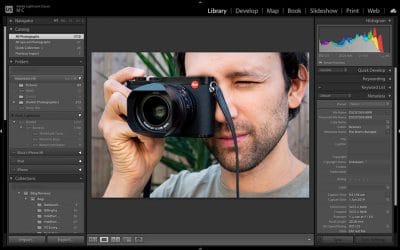TAX TIPS
As a photographer and a self-employed business owner you have a lot of expenses, and most of those are tax deductible. Everything from cameras, lights, memory cards and software – almost anything you need to run your business can be written off. Follow these tax tips to help lower your bill from the IRS at the end of the year.
A Home Office is a Must
A tax deductible home office is a commonly missed deduction that has tremendous benefits at tax time.
But why is this deduction so valuable? Not only can you deduct a portion of your mortgage or rent, but you can also deduct portions of your utilities, homeowner’s or renter’s insurance, home maintenance expenses that benefit your entire home, including your home office (for example, roof and furnace repairs or exterior painting); condominium association fees, snow removal expenses and security system costs.
Although driving from home is usually considered commuting, and is therefore not deductible as a business expense, having a tax deductible home office allows you to avoid the IRS’ commuting rule (since home is your office, you’re not commuting). Deduct all of the business miles you drive for your photography business – even when you leave from home.
You can take the home office deduction only if you regularly use part of your home exclusively for business. “Exclusive use” means that you use a portion of your home only for business. If you use part of your home as your business office and also use that part for personal purposes. You cannot meet the test of exclusive use and cannot take the home office deduction. You don’t need to devote an entire room in your home to your business. But some part of the room must be used exclusively for business.
Mileage
Please, please, please – if you’re not already tracking your mileage and deducting it at tax time please start doing so right now! I get it, with the detailed record keeping required by the IRS, you might be thinking that tracking a mile here and there is more effort than it’s worth. However, the current IRS mileage rate is 53.5 cents per mile, which means every one mile round trip drive you make for your business is worth $1.07 in tax deduction.
Now ask yourself, “How far is my favorite camera shop from my house?” (assuming you have a home office, of course). “How far did I drive for that last shoot?” You might not realize it, but those miles add up fast, and your mileage deduction will likely be one of your largest writeoffs at the end of the year.
Equipment
A photographer needs a lot of equipment: cameras, lenses, tripods, light meters, lights and countless other minutia. All of which is a tax write-off.
There are three ways to deduct your photography equipment: depreciation, a Section 179 deduction or a new IRS regulation called de minimis safe harbor that permits you to deduct any equipment you use in your business that costs $500 or less in a single year.
There are advantages to each of these, but since most business owners want to deduct as much as possible as soon as possible. You’ll probably want to opt for the Section 179 deduction of the de minimis safe harbor deduction. A tax professional can help you decide which makes the most sense, but the important thing is to keep track of every penny you spend on equipment.
One word of caution: Photography equipment falls within a special tax category called “listed property.” The IRS fears that taxpayers might use listed property items for personal reasons but claim business deductions for them. For this reason, you’re required to document your business use of listed property. You can satisfy this requirement by keeping a logbook or similar record showing when and how the property is used.
More Tax Tips?
In need of more tax advice? Don’t hesitate to explore our other blog posts for additional insights.
About the Author:
Joshua Brost handles the content and communication at MileIQ. MileIQ is an automatic mileage tracker that tracks the miles you drive for business. MileIQ automatically logs your drives and calculates their value – automatically creating a mileage log that’s compliant with IRS guidelines.






Recent Comments